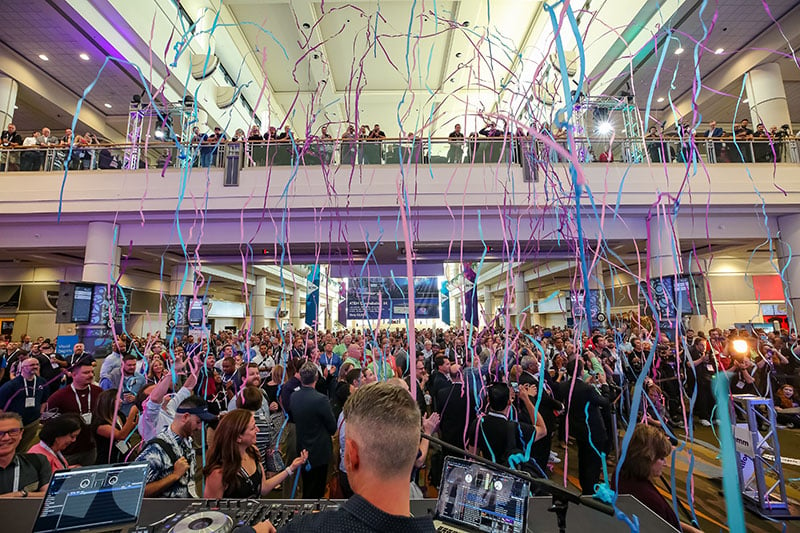AV Integrators Regroup: Health and Safety Challenges Amid a Pandemic
By Brad Grimes

As societies worldwide get back to business, with the coronavirus pandemic still ongoing, AV companies are ready to work. Many never stopped working. In much of the United States and elsewhere, AV integrators were deemed essential under the umbrella of telecommunications and construction professionals, and could therefore continue working where customers invited them in.
Doing so has required making adjustments, adhering to local regulations, and working with clients to keep their health concerns front-and-center while also delivering the AV and communication experiences they seek. Now, those same considerations will guide them through a phased reopening.
Open to Working in New Ways
“The one thing that has remained constant through this whole period of change — because we've seen things change from one day to the next — is the idea that we have to keep an open mind,” says Bill Warnick, CEO of Solutionz. “It's forced us to think creatively about things we haven't thought about before, like where we keep equipment and how we build racks.”
Today, getting to work not only means how AV companies execute safely at client sites, but also how they open their own offices and welcome back employees who have been working remotely — and may continue to do so.
Solutionz has offices around the U.S. In the Northeast region, Warnick says, techs were using the regional president’s office to build racks because she was working from home.
“We decided to adhere as closely to government mandates as possible,” Warnick says. “We put out a minimum set of guidelines that our offices had to adhere to, then each of the regional leaders could augment it. Because everything was state-specific. One office would be doing business as usual, while another would be in total lockdown.”
Today, getting to work not only means how AV companies execute safely at client sites, but also how they open their own offices and welcome back employees who have been working remotely — and may continue to do so.
As part of its weekly COVID-19 Impact Survey, AVIXA Market Intelligence asked in late May what steps AV providers were taking to keep safe during the pandemic: 74% said their staffs are wearing masks; 42% were doing extra cleaning at project sites; 40% were reducing the number of staff at project sites; and 36% said they were regularly screening crews for symptoms of COVID-19.
RELATED: For the AV Industry, Tough Times Aren’t Over Yet
Even as more economies begin to open, pro AV business sentiment has appeared to take a turn for the worse.
With more companies attempting to get back to a new normal, we asked AV pros about the lessons they’ve learned during the pandemic and how steps they’ve taken will help them operate safely in the months ahead.
Documenting Safe Practices
In Illinois, where AV integrator IAS Technology is based and where the city of Chicago was a major hotspot of coronavirus infections, different AV clients had different reactions to the unfolding situation. Having a clear plan for working with them proved beneficial. The University of Illinois, with which IAS does extensive AV work, closed down to assess the situation and then opened back up to accommodate projects; Illinois State, another IAS client, shut down completely; and Caterpillar, with which IAS contracted to build out its Chicago headquarters, wanted systems commissioned before June 1.
But before the AV team could work in the offices, where most of the time they were the only contractors on the floor, they had to document the steps they would take to create a safe environment.
“When the governor basically shut down Illinois, I assumed we couldn’t work on the project in Chicago,” says IAS Technology Chief Executive Officer Jeremy Caldera, CTS®-I. “But they weren’t shutting down completely because the company was considered essential, and we were considered essential.”
Employees in Caterpillar’s Chicago office were sent home to work remotely, so Caldera, whose company is based 160 miles southwest of Chicago, took the opportunity to hole up in a nearby hotel and work with local subcontractors to finish the project. “At first, the DoorDash delivery people would bring the food to your room, then they’d leave it at the door and run, and finally they left it outside the hotel and sent a picture,” he says.
But before the AV team could work in the offices, where most of the time they were the only contractors on the floor, they had to document the steps they would take to create a safe environment.
“We very promptly put into place a COVID-19 action plan in order to work in the buildings we serve,” Caldera says. “It follows CDC guidance and covers our responsibility to provide PPE, to sanitize workspaces, and other measures.”
The four-page document also details other possible steps IAS Technology would take to ensure safety during the pandemic, such as dividing up project crews to reduce the number of workers on a jobsite, if necessary; staggering lunches or breaks so workers don’t congregate in unsafe numbers; and urging workers to drive to sites individually, rather than carpool or use public transportation.
“When the University of Illinois re-opened, they said we could come back in to work as long as we had a plan in place,” Caldera says. “Fortunately, we were able to submit our COVID plan, they accepted it, and we got back to work again.”
RELATED: InfoComm 2020 Connected | Higher Ed AV Open Forum: Pivoting to the New Normal, or Whatever
Join the Higher Ed AV community to share approaches to designing, integrating, and supporting flexible learning spaces in a post-COVID university environment.
And having a documented plan in place has proven advantageous when trying to reengage customers that were especially cautious, but also had immediate needs. “We had customers tell us they needed to be priority one when things opened up again [in June],” Caldera says.
Of course, if every client were priority one, it could create a bottleneck that could strain the company’s resources. “So we asked to get in sooner,” says Caldera, “and when some balked, we showed them we had a plan and eventually they let us in to finish our work, which has certainly helped.”
READ NEXT: AV Integrators Regroup: Affirming Trust Through Communication





